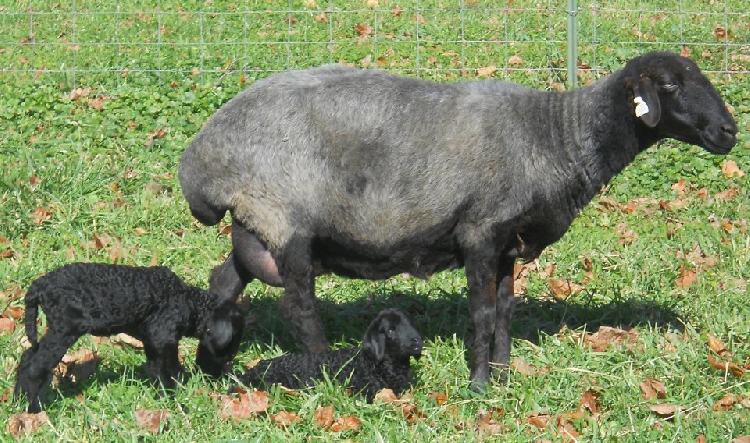THE Swakara sheep is believed to be one of the oldest breeds of domesticated sheep in the world. Originally from the steppes of Turkistan, this broad-tailed sheep gradually spread to other regions of Central Asia. This breed is named after the village of Qorako’l, in present-day Uzbekistan.
On 24 September 1907, the first 12 sheep – two rams and 10 ewes – arrived on a freight ship at Swakopmund, which at that time still had a harbour.
These sheep were imported to Namibia by the German government. From there the breed also spread to the Northern Cape and surrounding areas.
Indigenous sheep breeds like the Blackhead Persian and the Namaqua Afrikaner were especially suitable for the upgrading of the Swakara. The numbers of Swakara increased rapidly until it reached its peak of more than five million for Namibia and South Africa in 1979.
The grown sheep are medium-sized; their wool is a mixture of coarse and fine fibres, varying in colour from black to shades of tan and grey. Swakara has a wide tail that stores fat.
The head is long and narrow, slightly indented between the eyes and often exhibiting a Roman type nose. The long ears are always pointing downward and slightly forward. Most rams have horns and the females are polled.
The Swakara is distinguished by its coloured fleece, which is due to a dominant black gene. Most lambs are born coal black with lustrous wavy curls, with the face, ears and legs usually showing smooth, sleek hair.
As the lambs grow, the curls open and lose their pattern and the colour generally begins to turn brownish or bluish grey, getting greyer with age. Many adults have a double coat, a fine down undercoat, covered by a coat of guard hair.
Because of the significant differences between the pelts of Asian karakul lambs and those of southern African lambs, the local Swakara industry has embarked on an exercise to rename and re-brand the Swakara breed.
Since the first half of the 20th century, karakul pelts from South Africa and Namibia have been marketed as Swakara (derived from South West Africa).
In April 2013, Namibian authorities granted permission for the breed name to change to Swakara. The name change is necessary as pelt buyers associate Swakara with heavier-haired pelts.
Swakara sheep breed out of season, making it possible for three lamb crops every two years. Single lambs are the rule, although twins are not uncommon.
• Meat – The meat of the Swakara is very lean and the breed’s abundant milk supply is used for making butter and cheese in some countries.
• Wool – The wool of adult sheep is used in making carpets and other heavy fabrics. The Swakara sheep produce a lightweight, high volume, strong fibre fleece, which at its best is long and lustrous, usually with no crimp. It is easily spun, with little preparation. It produces a superior carpet yarn, is often used for rugs and saddle blankets, outer garments and wall-hangings, and has an excellent felting ability. It is the wool from which the art of felting evolved.
• Pelts – The best pelts are obtained from unborn lambs and those up to 3 days old. ?
Namibia produces approximately 140 000 Swakara pelts per annum. These are sold under the name Swakara at Kopenhagen Fur in Denmark twice a year. South Africa produces 20% of the total percentage of pelts that are exported.
Stay informed with The Namibian – your source for credible journalism. Get in-depth reporting and opinions for
only N$85 a month. Invest in journalism, invest in democracy –
Subscribe Now!






